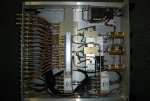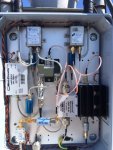Ubbe
Member
The way I checked the whole chain from antenna and down where to measure the signal strenght from a couple of other towers, that I also managed, when the site where first installed and then keep a record of all values of the site each time a site check where done. That way I could also see if the signal dropped from one of the other towers, that could then have a possible bad antenna radiation, if its power amplifier where still good and there wasn't a new high rise building blocking the signal.
/Ubbe
/Ubbe




